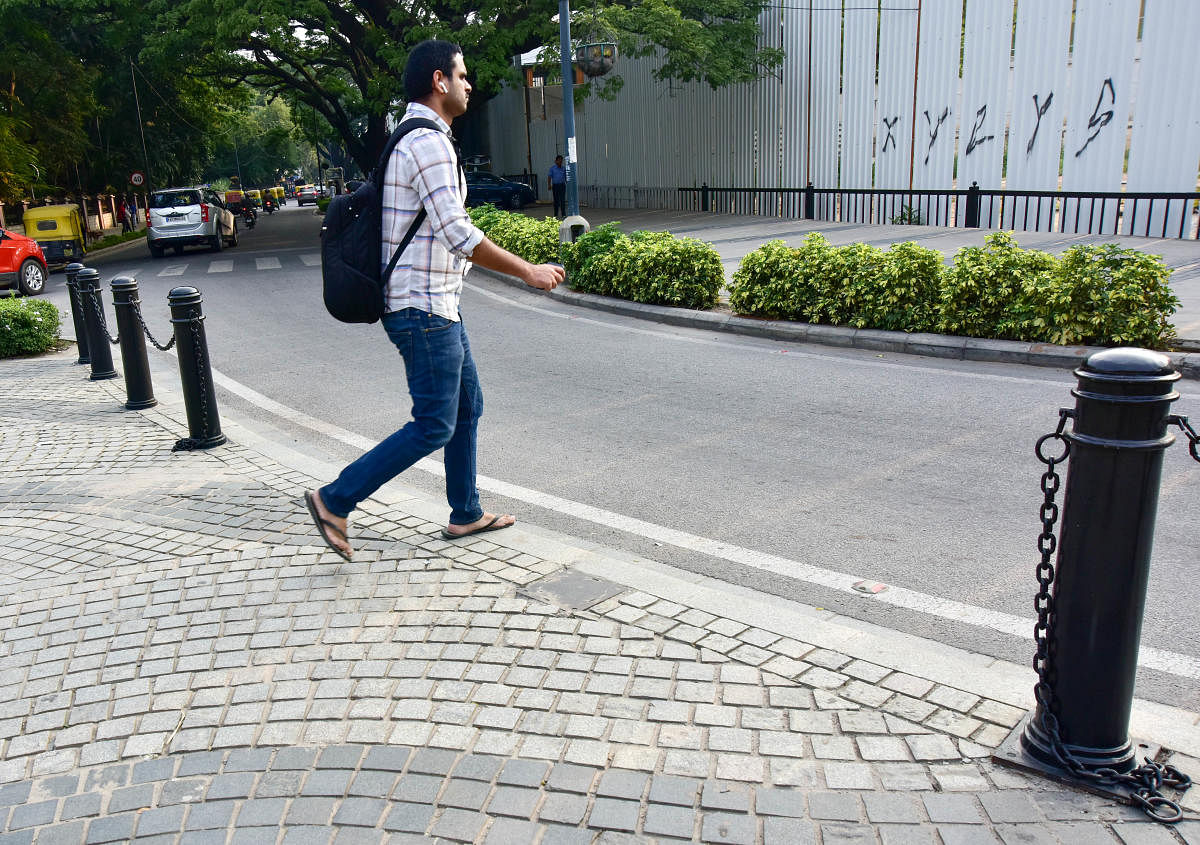
Infrastructure projects, especially roadworks, should consider people’s preferences for walking to make Bengaluru a sustainable city, IISc researchers have suggested.
The suggestion comes after a study found that most pedestrians belong to low-income groups who prefer walking or using public transport.
The team of researchers — IIT Ropar’s T M Rahul, IIT Delhi’s M Manoj, Northwestern University’s (Evanston) Divyakant Tahlyan, and Ashish Verma, Associate Professor-Transportation, Indian Institute of Science — noted that pedestrians were neglected while planning transportation infrastructure in Indian cities.
It has created an unsafe environment for the urban poor who form most pedestrians, they said.
The latest government data has revealed that Bengaluru registered more than 270 pedestrian deaths in 2019, the highest in the country.
Researchers took a sample survey of 793 Bengaluru households and found that the economically weaker sections (with an annual income of less than Rs 60,000) and low-income groups (below Rs 1.2 lakh annual income) were ready to walk more for work-related trips such as to a pick-up or drop-by point.
Travel information collected from the households suggested that the acceptable distance for work-related trips was 996 metres, while personal/household trips was only 263 metres.
Respondents in the high-income group were ready to walk more as they “may be living in areas that have favorable conditions for walking like the pedestrian paths and green patches. In addition, their destinations may be in close proximity,” it said.
Verma said the study highlights issues of low-income groups, whose voices are neglected during urban planning. “Over the years, roadworks undertaken by civic agencies have ignored footpaths completely, making walkers vulnerable,” he said.
“The agencies may quote IRC guidelines or other authority when it suits them but don’t address the real issues,” he added, noting that lack of consultant agencies is another issue.
“Agencies contracted to prepare pre-feasibility surveys or feasibility reports usually give what the client wants rather than solving specific problems,” he said.
Surveys, studies
The study urged the government to develop tools to understand the pedestrians’ needs for stratifying urban spatial environment, while also calling for more surveys and studies to understand important aspects such as land use and built environment studies.